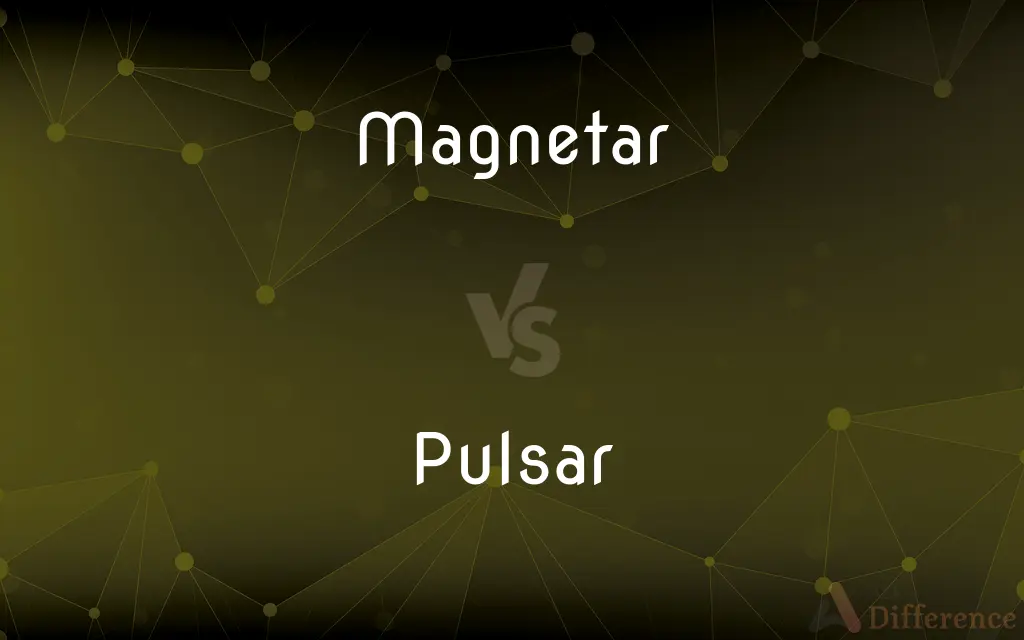Magnetar vs. Pulsar — What's the Difference?

Difference Between Magnetar and Pulsar
ADVERTISEMENT
Compare with Definitions
Magnetar
A magnetar is a type of neutron star believed to have an extremely powerful magnetic field (∼109 to 1011 T, ∼1013 to 1015 G). The magnetic-field decay powers the emission of high-energy electromagnetic radiation, particularly X-rays and gamma rays.
Pulsar
A pulsar (from Pulsating Radio Sources) is a highly magnetized rotating compact star (usually neutron stars but also white dwarfs) that emits beams of electromagnetic radiation out of its magnetic poles. This radiation can be observed only when a beam of emission is pointing toward Earth (similar to the way a lighthouse can be seen only when the light is pointed in the direction of an observer), and is responsible for the pulsed appearance of emission.
Magnetar
A neutron star with a very strong magnetic field. Magnetars are the proposed sources of observed gamma-ray bursts.
Pulsar
Any of several celestial objects emitting periodic, short, intense bursts of radio, x-ray, or visible electromagnetic radiation, generally believed to be quickly rotating neutron stars.
Magnetar
(star) A neutron star or pulsar with an extremely powerful magnetic field, especially those on which starquakes occur, thought to be the source of some gamma-ray bursts.
ADVERTISEMENT
Pulsar
(astronomy) A rotating neutron star that emits radio pulses periodically.
Pulsar
A degenerate neutron star; small and extremely dense; rotates very fast and emits regular pulses of polarized radiation
Share Your Discovery

Previous Comparison
Proselytization vs. Proselytism
Next Comparison
Limit vs. Max














































